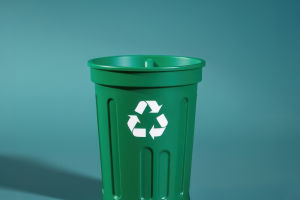Let's face it, Lykkers, kitchens are often the messiest part of the house. From cooking oils to splatters from frying, grease can accumulate on countertops, stovetops, and even the walls.
Not only does it look unpleasant, but grease can also become a breeding ground for bacteria and even attract pests. But don't worry, we've got you covered! Today, we're diving into the best ways to quickly and effectively tackle kitchen grease and restore cleanliness to your cooking space.
Start with Prevention: Keep Grease from Spreading
Before jumping into cleaning methods, let's talk about preventing grease buildup in the first place. Prevention is always easier than cleaning later, right? One simple way to reduce grease is by using splatter guards when frying food. These mesh screens are inexpensive and can help prevent oil from splattering onto nearby surfaces. You could also try using lower heat when cooking, as cooking at high temperatures can cause oils to spatter more. Plus, cleaning up small spills immediately is always easier than letting them sit and harden.
How to Remove Grease from Countertops?
Kitchen countertops are usually the first place we notice grease build-up, especially after a meal prep session. The good news is that removing grease from countertops doesn't have to be complicated. We can start by using a simple mixture of warm water and dish soap. Dish soap is great at cutting through grease, so just apply it to a sponge or cloth and gently wipe down your surfaces. For tougher grease stains, try adding a little baking soda to the water. The mild abrasiveness of baking soda helps scrub away the grease without damaging your countertops.
If you prefer natural cleaning solutions, a mixture of vinegar and water also works wonders. Simply mix equal parts of white vinegar and water in a spray bottle, spritz it onto the surface, and wipe it away. The acidity in vinegar breaks down the grease, leaving your countertops clean and fresh.
Cleaning the Stovetop: Getting into the Nooks and Crannies
Next up, the stovetop. We all know how easy it is for grease to splatter while cooking. And if you've let it sit for a while, it can become tough to remove. But no worries, we have solutions for this, too! For a quick fix, start by removing the grates or burners (if applicable) and soaking them in warm, soapy water. This will loosen up any grease and grime.
For the stovetop itself, a grease-cutting cleaner or degreaser can help. You can easily find these products in your local store, and they work great for cutting through tough grease. Simply spray the cleaner, let it sit for a few minutes, and then wipe it away with a clean cloth. Don't forget to clean the knobs and edges, as these often collect grease, too.
If you prefer a DIY option, combine equal parts of baking soda and water to create a thick paste. Apply this paste to the greasy spots on your stove, let it sit for a few minutes, and then scrub it off with a sponge. The gentle abrasiveness of the baking soda will remove the grease without scratching the surface.
Grease on Kitchen Walls: Quick and Effective Removal
Grease on the walls can be especially stubborn. If you've ever fried something on your stovetop, you've probably noticed greasy splatters on the walls around your kitchen. The solution? We can create a natural grease-fighting paste by mixing baking soda and water, as mentioned before. Apply the paste to the greasy spots, let it sit for a few minutes, and then scrub away with a damp cloth. If the grease is still being stubborn, try using a vinegar-water solution instead.
For those with painted walls, be careful not to scrub too hard, as harsh cleaning can damage the paint. Always test a small area first to ensure you don't end up with streaks or fading.
Cleaning Grease from Range Hoods and Exhaust Fans
The range hood above your stovetop collects grease more than any other part of the kitchen. While it's easy to forget, it's important to clean your range hood regularly to keep the grease from building up and affecting the fan's performance. To clean your range hood, start by removing the filters. Soak them in warm, soapy water, scrubbing gently with a brush to remove grease.
For the hood itself, a degreasing spray or vinegar-water solution will work wonders. Spray it generously, let it sit for a few minutes, and then wipe it off. For extra shine, finish up by wiping the surface with a microfiber cloth.
Dealing with Grease on Kitchen Floors
Grease can also find its way onto the kitchen floor, especially if you've been cooking with oils. To clean up, we recommend using a floor cleaner that is formulated to tackle grease. Alternatively, mix dish soap with warm water and mop the floor with this solution. You may need to go over it a few times, especially in high-traffic cooking areas.
For stubborn grease spots, sprinkle some baking soda directly onto the floor, let it sit for a few minutes, and then scrub with a brush or sponge. Rinse with clean water, and your floor will be sparkling clean.
Final Thoughts: Keep Your Kitchen Fresh
And there you have it, Lykkers! With these quick and effective methods, you can tackle kitchen grease like a pro. Whether it's your countertops, stovetop, walls, or floors, keeping grease at bay doesn't have to be a daunting task. By incorporating these easy cleaning techniques into your routine, your kitchen will stay fresh and spotless. So, what are your favorite kitchen cleaning tips? Share them with us – we love hearing your thoughts and experiences!


